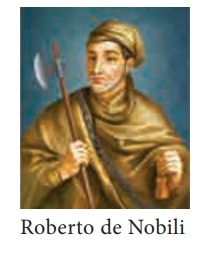State and Society in Medieval India | History - Society (Caste, Religion) | 9th Social Science : History: State and Society in Medieval India
Chapter: 9th Social Science : History: State and Society in Medieval India
Society (Caste, Religion)
Society
(a) Caste
Caste is the most
distinctive (and most discussed) aspect of Indian society. We first need to
understand two dimensions of the term ‘caste’. First, the four- fold division
of society as specified in the religious texts, referred to as varna.
There was a considerable proportion of the population which was outside the
varna system. The number of such people increased significantly by the medieval
period. This was partly because more and more pastoral and forest land was
being reclaimed for cultivation, and the people who lived in these lands were
evicted. They had to work as landless labourers for their living, and were
often tied to the land like serfs.
In reality, caste was a
complex phenomenon. It combined economic and social dimensions and has to be
understood under the more common term of jati.
The different jatis were
not necessarily at different levels of ranking in a vertical hierarchy, but each
still retained a separate identity. The persons who worked in any specific
occupation or profession considered themselves as part of a distinct caste.
These occupations could be service related or artisanal crafts like weaving,
metal work, woodwork etc. In most cities persons working in the same occupation
often lived in their own segregated quarters. In general, occupations were
hereditary. Technology and knowledge about production processes were
transferred orally from generation to generation.![]()
![]()
![]()
![]()
We have extensive
information about occupational castes for south India, especially Tamilnadu.
The occupational caste groups are sometimes referred to as guilds. They
functioned under a leader or small group of leaders who were the deciding
authority on all matters pertaining to the caste. Theoretically, any person who
worked in a particular occupation could become a member of the group (as was
the case in guilds in Europe). In practice, however, there are virtually no
instances of outsiders becoming a member of an occupational caste. Muslim
craftsmen or weavers could thus not become members of a Hindu group.
Improving the status of
their jati was a major pre-occupation for all caste groups. This is
particularly evident after the fourteenth century when the traditional local
assemblies which controlled the resources and social interactions began to
weaken. In traditional society many castes were denied various social rights
and privileges. Therefore, caste groups often petitioned the local ruler for
permission to use various symbols of higher status, like the right to wear
footwear, the right to carry umbrellas, the right to use certain decorations at
funerals and so on. Each caste also created a mythical genealogy to establish
its origins; this was used to justify the claim for the right to a higher
status in the hierarchy. These genealogies are found in many of the manuscripts
collected by Colin Mackenzie.
A singular and unusual
feature of the caste system existed in most of south India: groups of castes
were vertically divided into right (valankai) and left hand (idankai)
castes. Each group included castes at different levels in the caste hierarchy,
like merchants, land-owning castes and professional castes down to agricultural
labourers. This division was found throughout south India, but we have more
comprehensive information on the right and left hand castes in the Tamil region
because their conflicts are extensively documented in the English records.
Primarily, the conflicts
between the two groups were extremely violent. Generally, these conflicts arose
from the claims by each group to indicators of superior ceremonial status,
which was another manifestation of the constant striving for improving social
status in the caste hierarchy.
(b) Religion
Diverse institutions
with different ideologies came up within the bhakti movement during the
medieval period. Mathas or mutts were established under different gurus or
religious leaders like Vidyaranya; Saivite movements came up like the Tamil Saiva-siddhanta,
and the Virasaivas in Karnataka; in Maharashtra the Varkarisampradaya
(tradition) of the devotees of Vithoba arose in the 14th century.

Buddhism had faded out in India. Jainism also lost ground in most parts of India due to emergence of bhakti movement under Sankara and Ramanuja. However, it continued to thrive in parts of Gujarat and Marwar, especially among the trading communities. Islam spread throughout the country as Islamic sultanates were set up eventually entering south India. With regard to Christianity, there were a small number of Christian groups in Kerala claiming their origins to the time of St Thomas, the disciple of Jesus. But Christianity took roots when the Portuguese arrived in Kerala and set themselves up in Goa. In Goa itself the local population was under great pressure to convert to Christianity, especially under the oppressive conditions of the Inquisition. But Jesuit missionaries were also active in other areas, especially among the fishing communities on the Pandyan coast. The best known among the Jesuit missionaries was St Francis Xavier who was instrumental in making the fishing community to take to Christianity in the Tuticorin region. Another notable Jesuit was Roberto de Nobili, a scholar, who was based in Madurai.
In the north a new
religion, Sikhism, was founded by Guru Nanak, who lived during 15th and 16th
century. Sikhism grew in strength in spite of severe repression by Aurangzeb.
Thus, by the beginning of the eighteenth century, many religions co-existed
across India. Foreign religions also came to India when Jews and Zoroastrians
(Parsis) migrated to India. The Parsis, who fled Persia to escape persecuation,
settled in Gujarat, while the Jews lived in Kerala. Parsi merchants were among
the richest and most prominent in the port of Surat, and subsequently, in
Bombay under the British.
Related Topics